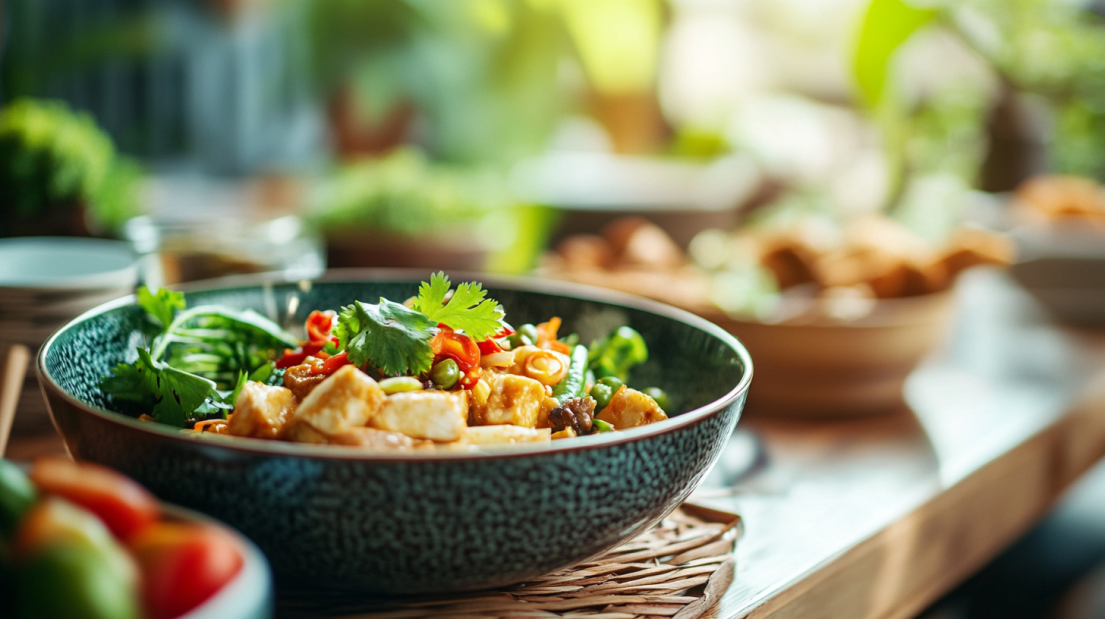Thai food is something special. It’s not just about the flavors (though, let’s be honest, they are incredible).
It’s a whole experience aromatic herbs, fresh ingredients, bold spices, and a perfect balance of sweet, sour, salty, and spicy.
But beyond taste, Thai cuisine packs some serious nutritional benefits.
I’ve been obsessed with Thai food for years, and after digging deep into its health aspects, I’m even more in love with it.
If you’re curious about how Thai dishes can fit into a healthy lifestyle, keep reading.
I’m breaking down everything from the power of herbs to how to enjoy Thai food without overloading with calories.
The Secret Behind Thai Food’s Nutritional Power
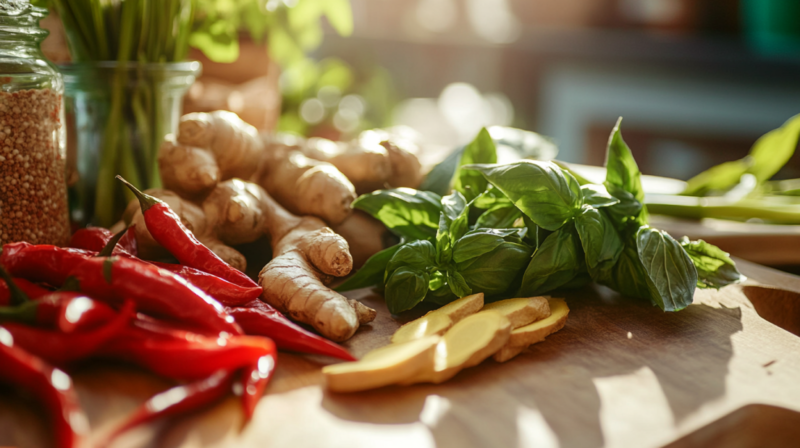
Thai cuisine isn’t just about making food taste good; it’s built around fresh, nutrient-rich ingredients. Every dish feels intentional—whether it’s a spicy soup that warms you up from the inside or a stir-fry loaded with veggies.
1. Herbs and Spices – More Than Just Flavor
Herbs and spices in Thai cooking do more than make your meal smell amazing; they bring a ton of health benefits.
- Turmeric – A natural anti-inflammatory, turmeric is the golden ingredient in many Thai curries. It’s been linked to improved brain function and lower risk of chronic diseases.
- Galangal – Similar to ginger but with a more peppery kick, galangal supports digestion and has antibacterial properties.
- Lemongrass – Helps with digestion, reduces bloating, and gives dishes that signature fresh citrusy touch.
- Thai Basil – Unlike the sweet basil in Italian dishes, Thai basil has a slightly spicy, licorice-like flavor and is packed with antioxidants.
- Chilies – Capsaicin, the active compound in chili peppers, boosts metabolism, reduces inflammation, and even acts as a natural pain reliever.
Thai Food’s Balance of Nutrients
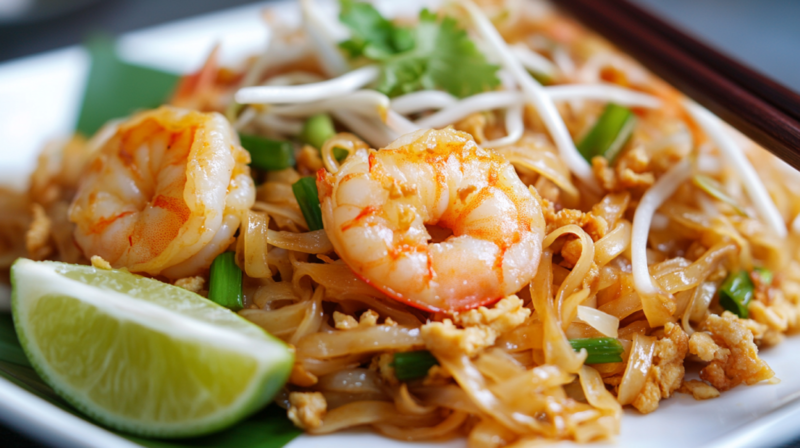
One of the reasons I feel great after eating Thai food is that it’s often well-balanced in macronutrients—protein, healthy fats, and carbs—along with a good dose of fiber and micronutrients.
2. Healthy Proteins – Lean and Flavorful
Thai food features a variety of proteins, making it easy to build a balanced meal.
- Seafood – Many Thai dishes use shrimp, fish, or squid, which are high in lean protein and omega-3 fatty acids.
- Chicken and Pork – Common in stir-fries and soups, these proteins add substance while staying relatively lean.
- Tofu and Tempeh – Perfect for vegetarians, tofu and tempeh absorb Thai flavors beautifully and provide plant-based protein.
3. Fresh Vegetables – A Rainbow on Your Plate
View this post on Instagram
Thai cuisine celebrates vegetables in a way that makes them exciting. Many dishes include a mix of crunchy, colorful veggies, such as:
- Bok choy – Great source of vitamins A, C, and K.
- Morning glory (water spinach) – Popular in stir-fries, this leafy green is rich in iron and fiber.
- Eggplant – Soaks up flavors while adding fiber and antioxidants.
- Papaya – Found in the famous Som Tum (papaya salad), packed with digestive enzymes and vitamin C.
4. Healthy Fats – The Good Kind
Coconut milk plays a big role in Thai curries, offering a dose of healthy fats that keep you full.
While it’s calorie-dense, it provides medium-chain triglycerides (MCTs), which can boost energy and metabolism.
Nuts, such as peanuts and cashews, also make frequent appearances, adding crunch and heart-healthy fats.
What to Watch Out for in Thai Food
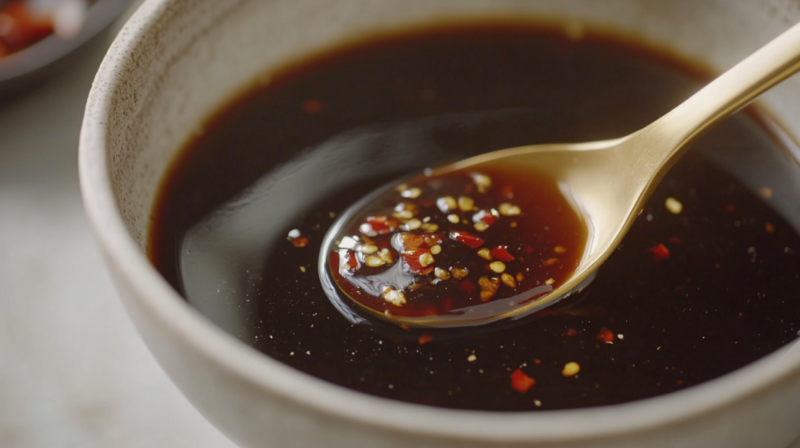
Even though Thai food is packed with nutritious ingredients, there are a few things to be mindful of, especially if you’re watching your calorie intake or sodium levels.
5. The Sneaky Calories in Sauces
Some Thai sauces are higher in sugar and sodium than you might expect. Sweet chili sauce, oyster sauce, and some versions of peanut sauce can add extra calories quickly. When cooking at home, I try to:
- Swap out sugar for a little honey or coconut sugar.
- Use low-sodium soy sauce or tamari.
- Add fresh lime juice for a natural burst of flavor instead of extra salt.
6. Fried Foods – Delicious but Heavy
Fried dishes like Pad Thai, spring rolls, and deep-fried fish are undeniably delicious but can be heavy. Instead, I go for:
- Grilled meats – Gai Yang (grilled chicken) is a great high-protein option.
- Steamed or stir-fried dishes – Less oil but still packed with flavor.
7. White Rice – Moderation is Key
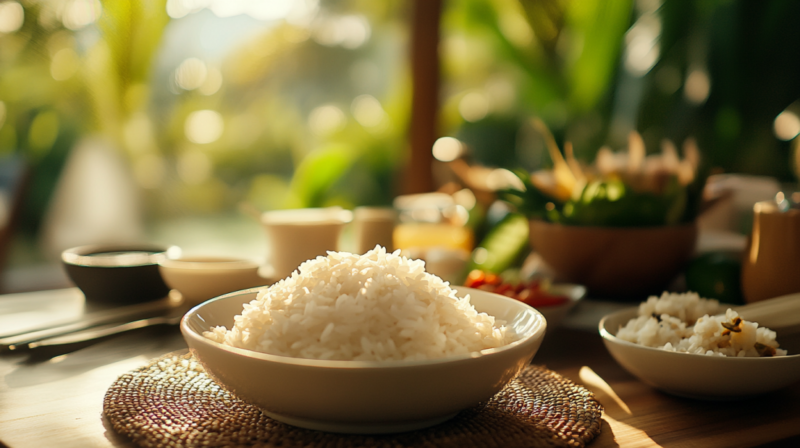
Thai cuisine often comes with jasmine rice, which, while delicious, can be easy to overeat. Brown rice or cauliflower rice makes a good substitute if you’re looking to add more fiber.
Best Healthy Thai Dishes to Order or Make at Home
If you want the best of both worlds—flavor and nutrition—these dishes are great choices:
8. Tom Yum Soup – Spicy, Sour, and Packed with Goodness
A light, broth-based soup with shrimp, mushrooms, lemongrass, and lime juice. It’s low in calories and full of antioxidants.
9. Som Tum (Green Papaya Salad) – Crunchy and Refreshing
Made with shredded green papaya, tomatoes, green beans, peanuts, and chili, this dish is fresh, tangy, and loaded with vitamins.
10. Larb (Minced Meat Salad) – High-Protein and Flavorful
A salad made with minced chicken or pork, fresh herbs, lime juice, and roasted rice powder. It’s high in protein and low in carbs.
11. Pad Pak (Stir-Fried Vegetables) – Simple and Nutritious
Stir-fried veggies with garlic and light seasoning, often served with tofu or lean protein.
12. Gai Yang (Grilled Chicken) – Smoky and Delicious
@silkroadrecipes Gai Yang Chicken is a Thai grilled chicken recipe featuring a spicy lemongrass marinade. Use boneless chicken thighs and you can make this flavorful Asian BBQ in less than 45 minutes! #silkroadrecipes #chicken #dinner #thai #grilledchicken #gaiyangchicken ♬ Natural Emotions – Muspace Lofi
Marinated with lemongrass, garlic, and coriander, this dish is packed with flavor without the extra oil.
My Personal Take
I always feel energized after a good Thai meal. Maybe it’s the fresh herbs, the balance of flavors, or just the way Thai food makes healthy eating so effortless. Unlike many other cuisines, it doesn’t feel like you have to try to eat healthy—it just happens naturally.
Cooking Thai food at home has been a game-changer. The control over ingredients makes it easier to keep things balanced while still enjoying bold flavors. If you’re new to making Thai food, start with something simple like Tom Yum Soup or a quick stir-fry. The flavors will hook you in no time.
Thai food isn’t just about eating—it’s about feeling good, inside and out. And honestly, that’s why I keep coming back to it.
What’s your go-to Thai dish? Have you tried making any at home? Let me know!
